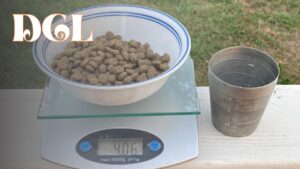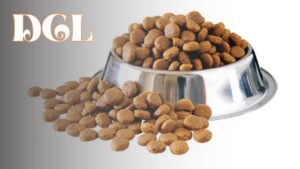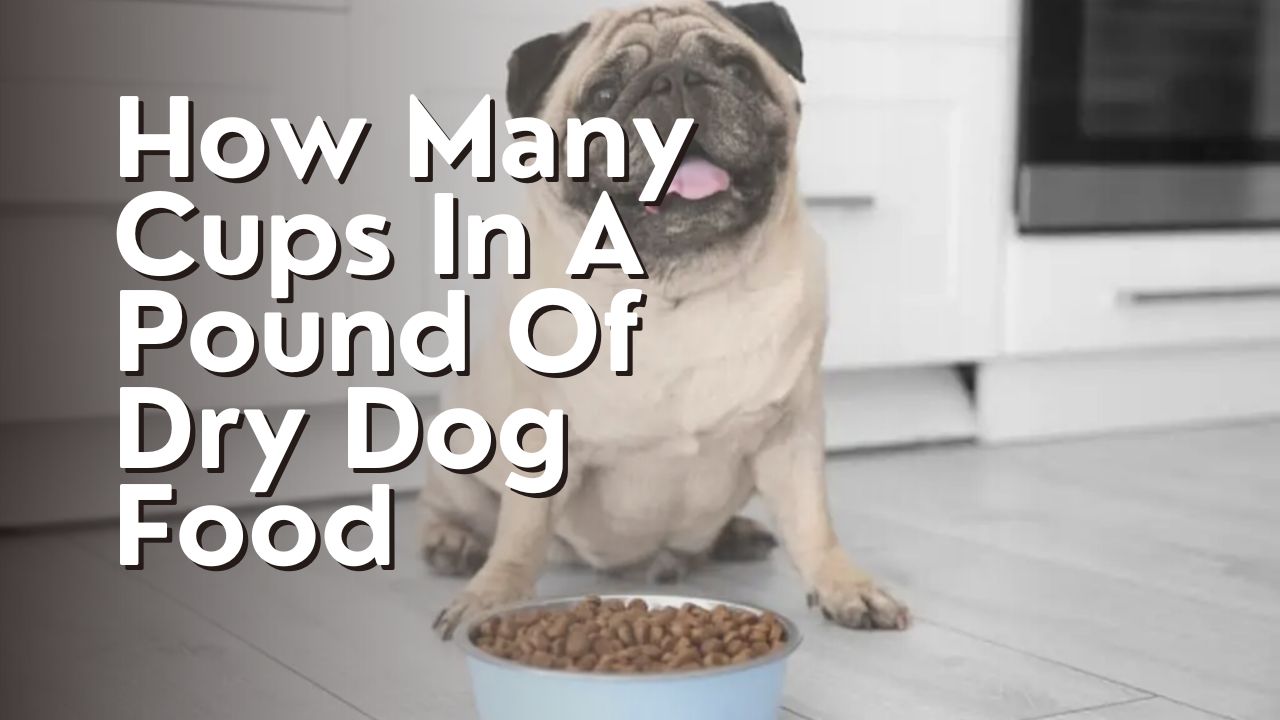Hey there! Have you ever wondered how many cups are in a pound of dry dog food? Well, you’ve come to the right place! In this article, I’ll guide you through understanding serving sizes for dogs and how to convert pounds to cups when it comes to feeding your furry friend.
Knowing the right amount of food to give your dog is crucial for their health and well-being. Whether you’re a new dog owner or just looking to brush up on your knowledge, I’ve got you covered.
We’ll also explore common dog food cup sizes and other important considerations to keep in mind when feeding your pup.
Additionally, I’ll share some helpful tips on properly measuring dog food to ensure your dog is getting the right amount of nutrition.
So, let’s dive in and unravel the mystery of how many cups are in a pound of dry dog food!
Understanding Serving Sizes for Dogs
If you’re wondering how much to feed your furry friend, it’s essential to understand the serving sizes for dogs. Feeding your dog the right amount of food is crucial for their overall health and well-being. The serving size for dogs can vary depending on their size, age, and activity level. It’s important to consult with your veterinarian to determine the appropriate serving size for your specific dog.
When it comes to dry dog food, a common question is how many cups are in a pound. The answer may vary depending on the brand and type of dog food, but as a general rule of thumb, there are typically around 4 cups in a pound of dry dog food. However, it’s important to note that this can vary, so it’s always best to check the packaging or consult with the manufacturer for specific guidelines.
Understanding the serving sizes for dogs is crucial to ensure that your furry friend is getting the right amount of nutrition. Overfeeding can lead to obesity and other health issues, while underfeeding can result in malnourishment. It’s important to monitor your dog’s weight and adjust their serving size accordingly.
Remember, every dog is unique, so what works for one dog may not work for another. By understanding the serving sizes for dogs, you can provide your furry friend with the right amount of food to keep them healthy and happy.

Converting Pounds to Cups
Imagine being able to easily convert the weight of your dog’s food into the perfect measurement for their meal. Converting pounds to cups is a useful skill for any dog owner who wants to ensure their furry friend is getting the right amount of food. Luckily, it’s a simple process that can be done in just a few steps.
To convert pounds to cups, you’ll need to know the density of the dog food you’re using. Different brands and types of food can have different densities, so it’s important to check the packaging or consult the manufacturer for this information. Once you have the density, you can use a conversion chart or calculator to determine the number of cups in a pound.
Here’s a quick breakdown of how to convert pounds to cups:
- Find the density of your dog food.
- Use a conversion chart or calculator to determine the number of cups in a pound.
- Multiply the number of cups by the desired weight in pounds to get the amount of food you should serve.
By mastering this skill, you’ll be able to easily adjust your dog’s serving size based on their weight and dietary needs. It’s a small but important step in ensuring their overall health and happiness.
Common Dog Food Cup Sizes
When it comes to feeding my dog, understanding common dog food cup sizes is important. Different brands may have different standard cup sizes, so it’s crucial to know how much food is in each cup.
This knowledge helps me adjust my dog’s portions accordingly, ensuring they receive the right amount of nutrition.
Standard Cup Sizes for Different Brands
Most brands of dog food have standard cup sizes that can help you measure the right amount for your furry friend. These cup sizes vary depending on the brand but are generally consistent within each brand.
For example, Brand A may have a standard cup size of 1 cup, while Brand B may have a standard cup size of 1.5 cups.
It’s important to note that these cup sizes are designed for dry dog food and may not be accurate for other types of dog food, such as wet or canned food.
To ensure you are feeding your dog the correct amount, always refer to the feeding guidelines provided on the packaging of the specific brand and type of dog food you are using.
Adjusting Portions Based on Cup Sizes
To ensure your furry friend gets the right portion, simply adjust the amount based on the cup sizes provided by the brand of dog food you’re using. Different brands may have variations in cup sizes, so it’s important to check the packaging or their website for specific measurements. Here’s an example of how you can adjust portions based on cup sizes:
| Cup Size | Weight of Dog | Amount of Food |
|---|---|---|
| 1/2 cup | 10 pounds | 1 1/4 cups |
| 1 cup | 20 pounds | 2 1/2 cups |
| 2 cups | 40 pounds | 5 cups |
By referring to this table, you can easily determine how much food to give your dog based on their weight and the cup size provided. Remember to always consult your veterinarian for personalized advice on your dog’s dietary needs.
Other Considerations for Feeding Dogs
Additionally, it’s important to consider other factors when feeding dogs, such as their specific dietary needs and activity levels. Every dog is unique and may require different amounts of food based on their individual needs. For example, puppies and highly active dogs may need more food compared to older or less active dogs.
One important consideration is the dog’s breed and size. Larger breeds generally require more food than smaller breeds. It’s essential to follow the feeding guidelines provided by the dog food manufacturer, as they usually provide recommendations based on the dog’s weight and age.
Another factor to consider is the dog’s overall health. Some dogs may have specific dietary requirements due to allergies or medical conditions. In these cases, it’s crucial to consult with a veterinarian to determine the appropriate diet for your dog.
Lastly, it’s important to monitor your dog’s weight and adjust the portion sizes accordingly. If your dog is gaining or losing weight, it may be necessary to increase or decrease their food intake. Regularly assessing your dog’s body condition and consulting with a veterinarian will help ensure that they are receiving the proper nutrition.
In conclusion, when feeding dogs, it’s important to consider their specific dietary needs, activity levels, breed and size, overall health, and weight. By taking these factors into account, you can provide your dog with a balanced and appropriate diet to support their overall well-being.

Tips for Properly Measuring Dog Food
One simple trick for accurately measuring your pup’s meals is to use a kitchen scale. This handy tool allows you to measure your dog’s food in pounds, which can then be converted to cups. However, it’s important to note that the number of cups in a pound of dry dog food can vary depending on the density of the food. As a general guideline, a pound of dry dog food is typically equivalent to about 3-4 cups.
To ensure that you are measuring your dog’s food accurately, it’s best to consult the feeding guidelines provided by the dog food manufacturer. These guidelines will give you a recommended amount of food to feed your dog based on their weight and activity level. Keep in mind that these guidelines are just a starting point, and you may need to adjust the amount of food based on your dog’s individual needs.
Another tip for measuring dog food accurately is to use a measuring cup specifically designed for pet food. These cups often have markings that indicate the number of cups and fractions of a cup, making it easier to measure the correct amount. It’s also important to measure your dog’s food before adding any water or other additives, as these can affect the volume of the food.
By following these tips, you can ensure that you are measuring your dog’s food accurately and providing them with the proper nutrition they need to thrive.
Frequently Asked Questions
Can I feed my dog more than the recommended serving size if they are still hungry?
Yes, you can feed your dog more than the recommended serving size if they are still hungry. It’s important to monitor their weight and consult with a veterinarian to ensure they maintain a healthy diet.
How do I calculate the serving size for a puppy or a senior dog?
To calculate the serving size for a puppy or senior dog, consider their weight, activity level, and specific nutritional requirements. Consult with your veterinarian for personalized recommendations to ensure their needs are met.
Is it necessary to measure dry dog food by weight or can I rely on volume measurements?
It is necessary to measure dry dog food by weight rather than volume. This ensures accurate portion sizes and helps prevent overfeeding or underfeeding, which can have negative health effects on your dog.
Can I mix different brands or flavors of dry dog food together for variety?
Yes, I can mix different brands or flavors of dry dog food together for variety. It’s a great way to keep my dog interested in his meals and provide him with a well-rounded diet.
Are there any health risks associated with overfeeding or underfeeding my dog?
There can be health risks associated with both overfeeding and underfeeding dogs. Overfeeding can lead to obesity and related health issues, while underfeeding can result in malnutrition and other deficiencies. It’s important to provide balanced and appropriate portions for your dog’s well-being.
Conclusion
In conclusion, it’s important for dog owners to understand the serving sizes for their dogs and how to properly measure their food.
Converting pounds to cups can be a helpful way to determine the right amount of dry dog food to feed your furry friend.
It’s also important to consider the cup sizes of different dog food brands and to consult with your veterinarian for specific feeding recommendations.
By following these tips, you can ensure that your dog is getting the proper nutrition they need.


